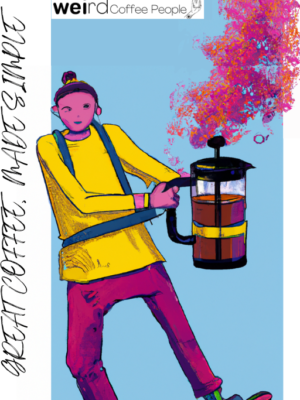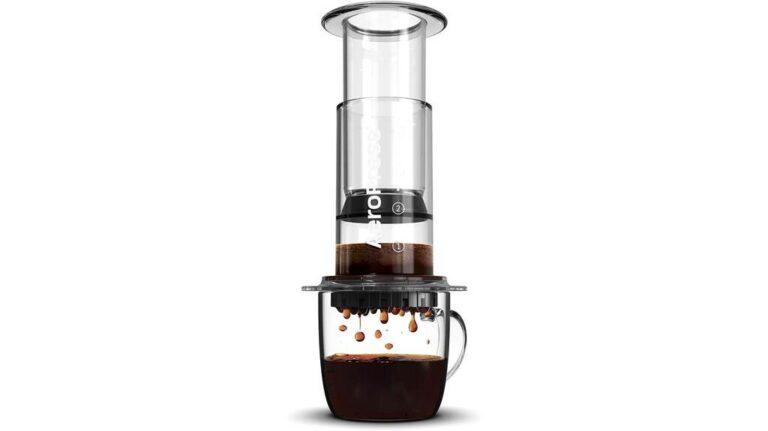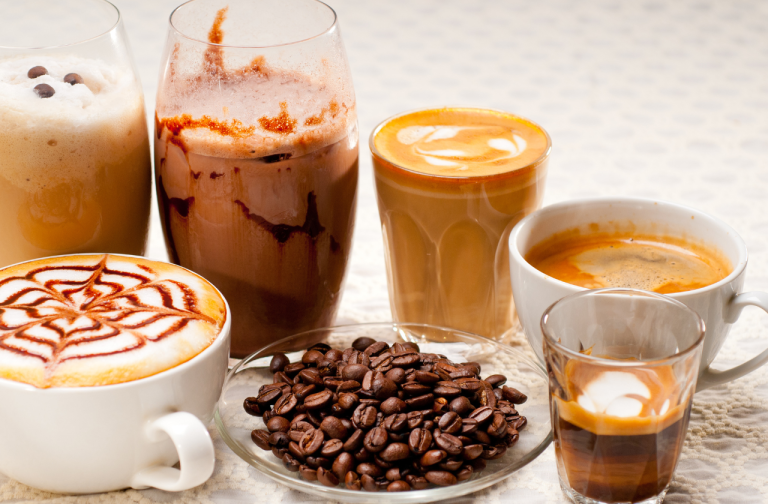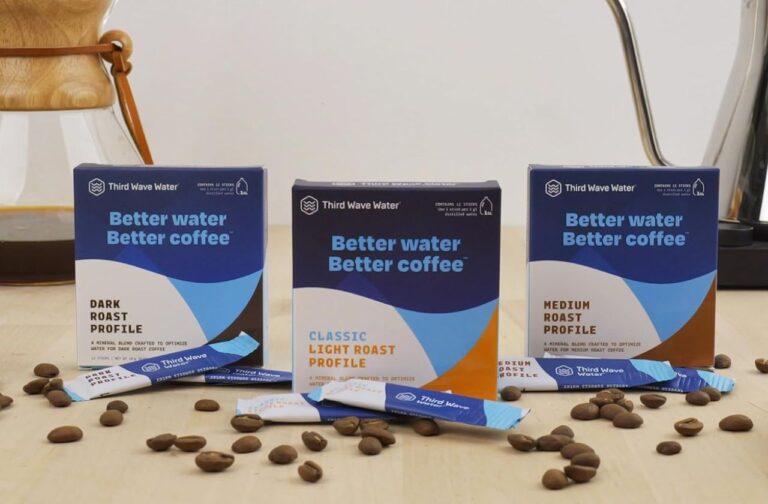Making Great Coffee: Essential Factors for a Perfect Cup
Coffee is more than just a beverage; it’s an experience, a ritual for many, and for some, a passionate pursuit. The key to a great cup of coffee lies in the harmony of two core elements: quality ingredients and meticulous brewing methods.
Each element, from the bean to the last drop in the cup, plays a crucial role in shaping the overall flavor, aroma, and quality of the coffee.
At the heart of great coffee are the beans themselves. The choice of beans, their origin, the altitude at which they were grown, and the method of roasting, all contribute significantly to the flavor profile of the coffee.
Whether you prefer bold, robust flavors or a lighter, more aromatic brew, the selection of the right beans is the first step in a journey towards coffee perfection.
However, the journey doesn’t end there. The magic of coffee brewing is as much a science as it is an art. The quality of water, the water-to-coffee ratio, the brewing temperature, and the method of extraction are factors that, when finely tuned, can elevate a simple brew into an extraordinary experience.
Recognizing the intricacies involved in brewing, the Specialty Coffee Association (SCA) has set forth a series of standards and best practices. These guidelines are designed to help both novices and seasoned coffee enthusiasts navigate the complex world of coffee brewing.
The SCA’s standards provide valuable insights into the elements that contribute to a superior cup of coffee, emphasizing the importance of precision and care in the brewing process.
As we delve deeper into the art and science of making great coffee, we will explore these components in detail. From the significance of selecting quality beans to the intricacies of water quality and brewing ratios, and the insightful guidance provided by the Specialty Coffee Association, this article aims to be your compass in the quest for the perfect cup of coffee.
Whether you are a casual coffee drinker or a coffee professional, understanding these fundamental aspects will enhance your appreciation and enjoyment of every cup.
Quality Coffee Beans: The Foundation of Great Coffee

The journey to an exceptional cup of coffee begins with one fundamental ingredient: the coffee bean. The quality of the beans not only dictates the flavor and aroma of the brew but also reflects the unique character imparted by their origin and processing.
Understanding and selecting high-quality beans is therefore an essential step for any coffee enthusiast.
The Importance of Choosing High-Quality Beans
High-quality coffee beans are the cornerstone of great coffee. They are typically grown in specific microclimates that offer the ideal conditions for coffee cultivation, including the right altitude, soil, and weather.
These beans are often handpicked to ensure that only the ripest cherries are harvested, which leads to a more consistent and flavorful coffee. Additionally, high-quality beans undergo careful processing and roasting, which significantly influences the final taste profile.
Types of Coffee Beans and Their Characteristics
The two most common types of coffee beans for brewing are Arabica and Robusta, each with distinct characteristics:
- Arabica: Known for its smooth, complex flavor profiles, Arabica beans are often considered superior in quality. They typically have a sweeter, softer taste with tones of sugar, fruit, and berries. Their acidity is higher, giving it a winey taste that is preferred in the coffee world.
- Robusta: These beans are stronger and more bitter in flavor compared to Arabica. They contain more caffeine, which can make them more bitter and less acidic. Robusta beans are common in espresso blends to create a better crema (the creamy layer on top of an espresso) and to add a punchier coffee flavor.
How Bean Origin and Roasting Affect Flavor
The flavor of coffee is deeply influenced by the region where the beans are grown. Factors like climate, altitude, and soil type contribute to the unique taste profiles associated with coffee from different regions. For example, African coffees are often known for their floral and fruity notes, while Latin American coffees might have a nutty or chocolaty profile.
Roasting also plays a pivotal role in defining the flavor of the coffee. The roasting process brings out the aromas and flavors that is locked inside the raw coffee beans. Beans are roasted to varying degrees, from lightly roast to dark roast, which affects the strength, bitterness, and acidity of the brew.
Light roasts tend to retain more of the original flavor of the bean, including its natural acidity and fruitiness, while dark roasts often have a bolder, more robust flavor with less acidity.
Selecting the right type of bean, understanding its origin, and knowing its roast profile are key steps in crafting a great cup of coffee. Each coffee bean tells a story of its journey from a faraway farm to your coffee cup, and appreciating this journey is part of the pleasure of coffee tasting and brewing.
The Significance of Clean, Fresh Water
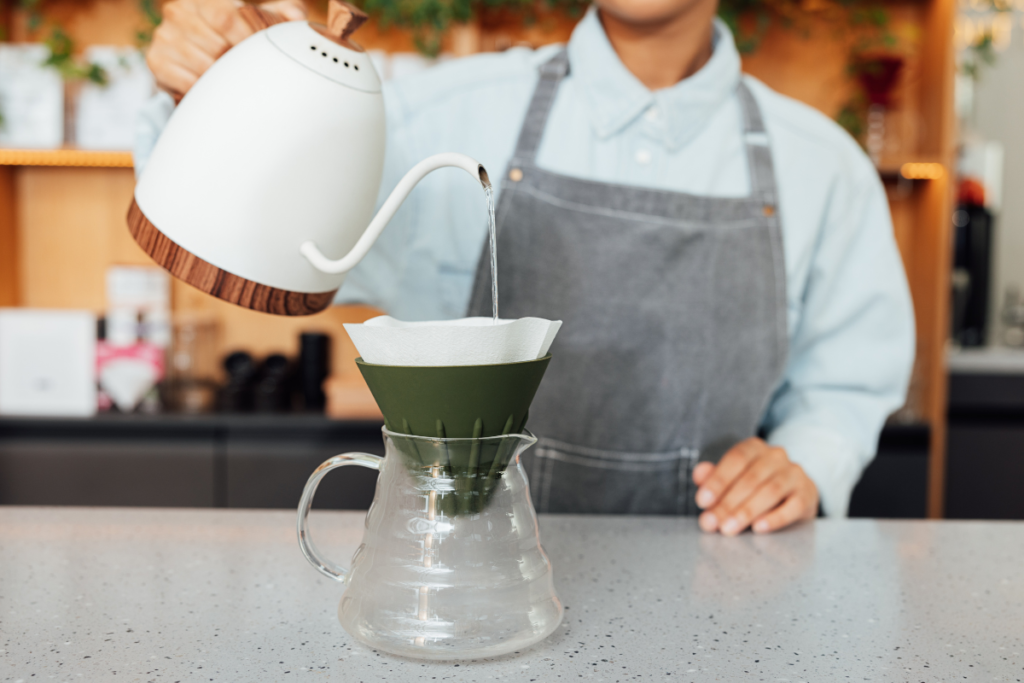
While coffee beans are the star of the show, water is the unsung hero in the coffee brewing process. Making up about 98% of a typical cup of coffee, the quality and characteristics of the water used can impact the taste of the final brew significantly. Understanding the role of water is key to ensuring each cup of coffee is as delicious as possible.
The Impact of Water Quality on Coffee Brewing
The quality of the water used for making coffee can greatly influence the taste and experience of your coffee. Water with high levels of minerals (hard water) can lead to a cup that is overly bitter and flat, as these minerals can interfere with the extraction of coffee flavors.
Water that is too pure or distilled can result in a weak, empty, and under-extracted brew, lacking in flavor and richness. The ideal water for coffee brewing is clean, fresh, and with a balanced mineral content.
Tips for Ensuring Water Purity and Freshness
To ensure the water you use doesn’t detract from your coffee’s flavor, consider the following tips:
- Use Clean, Filtered Water: If your tap water is not of the best quality or tastes off, use a water filter. Filters can remove impurities and unwanted flavors from your water, providing a neutral base for your coffee.
- Avoid Distilled or Softened Water: These types of water lack the minerals necessary for proper extraction of coffee flavors. Stick to filtered or bottled water with a balanced mineral content.
- Regularly Change Your Filters: If you use a water filter or a coffee maker with a built-in filter, be sure to change the filters regularly to maintain water quality.
- Use Fresh Water: Always use fresh water for brewing. Water that has been sitting in your coffee machine or a container can become stale, affecting the taste of your coffee.
Water temperature is crucial in the coffee extraction process. The ideal brewing temperature for most coffee is 195°F – 205°F (90°C – 96°C), depending on the brew method and roast level of the coffee beans.
Water that is too hot can over-extract the coffee, causing an empty, underwhelming, and bitter taste. Conversely, water that is not hot enough may under-extract, resulting in a weak, underwhelming cup.
- Use a Thermometer: For precision, use a thermometer to check your water’s temperature before brewing.
- Pre-Heat Your Equipment: Rinsing your coffee pot and filter with hot water before brewing can help maintain the correct brewing temperature.
- Be Consistent: Try to keep the water temperature consistent each time you brew to achieve a consistent flavor profile.
The quality and temperature of the water used in brewing coffee are as important as the quality of the coffee beans themselves. By paying attention to these aspects, you can ensure that each cup of coffee you brew is a reflection of your care and attention to detail.
Mastering The Water-to-Coffee Ratio

Achieving the ideal balance between water and coffee is crucial for extracting the best flavor from your beans. The water-to-coffee ratio is a key determinant of the strength and taste of your brew.
Mastering this ratio can elevate your coffee experience, allowing you to consistently produce a cup that suits your individual preference.
Explanation of the Ideal Water-to-Coffee Ratio
The ideal water-to-coffee ratio is often a matter of personal taste. A good starting point is a ratio of 1:16 – one part coffee to sixteen parts water. This ratio balances extraction efficiency with flavor and strength, providing a good baseline for most brewing methods.
How Different Ratios Affect the Strength and Flavor of the Coffee
Adjusting the water-to-coffee ratio can significantly alter the taste of your coffee:
- Stronger Coffee: For a stronger, more robust cup, you can use a stronger coffee-to-water ratio, such as 1:14. This means more coffee and less water, which results in a more concentrated brew.
- Milder Coffee: If you prefer a lighter cup, try a lower coffee-to-water ratio, like 1:18. This will produce a milder, less intense flavor.
It’s important to note that over-extraction (too much water or brewing time) can make coffee taste bitter, while under-extraction (too little water or brewing time) can lead to a weak, sour cup.
Techniques for Measuring and Adjusting Ratios
To consistently achieve your preferred coffee strength, precise measurement is key. Here are some techniques:
- Use a Scale: For the most accurate measurements, use a kitchen scale. Measure your coffee and water in grams. This way, you can easily replicate or adjust your ratio.
- Standard Measuring Tools: If you don’t have a scale, use standard measuring spoons and cups. Remember that the size of the coffee grind can affect the volume, so this method may be less precise.
- Keep Notes: When experimenting with different ratios, keep notes of the amounts and the resulting taste. This can help you fine-tune your preferences.
- Adjust Gradually: Make small adjustments to the ratio instead of large ones. This will help you better understand how each change affects the flavor.
- Consistency in Brewing Method: Different brewing methods (drip, French press, espresso, etc.) may require different ratios. Be consistent with your brewing method when adjusting ratios.
By understanding and controlling the water-to-coffee ratio, you become an active participant in the creation of your coffee, tailoring each cup to your taste. This mastery not only enhances your daily coffee routine but also deepens your appreciation for the intricate details of coffee brewing.
Adhering to the Specialty Coffee Association’s Water Brewing Standards

The Specialty Coffee Association (SCA) sets forth comprehensive guidelines that serve as a benchmark for brewing quality coffee.
These standards are designed to help enthusiasts and professionals alike achieve consistent excellence in their coffee brewing. Understanding and applying these standards can significantly elevate the quality of your home-brewed coffee.
An Overview of the Specialty Coffee Association’s Standards
The SCA’s water brewing standards focus on several key aspects:
- Water Quality: The standards recommend using clean, odor-free water with a mineral content that falls within a specific range. This includes a general hardness (GH) of 50-175 parts per million (ppm) and an alkalinity of at least 40 ppm but not exceeding 70 ppm.
- Water Temperature: The ideal water temperature for brewing coffee is 195°F – 205°F (90°C and 96°C). This range is crucial for optimal extraction of coffee flavors and aromas.
- Brewing Time: The recommended brewing time varies depending on the method, but it generally ranges between 2 to 8 minutes. This ensures that the coffee grounds are adequately saturated and extracted.
- Coffee-to-Water Ratio: As previously discussed, a standard ratio of 1:16 (coffee to water) is recommended for a balanced brew.
How These Standards Contribute to Consistent Coffee Quality
Adhering to the SCA’s standards ensures that each variable in the coffee brewing process is optimized for quality. Consistency in water quality, temperature, brewing time, and the coffee-to-water ratio means that the full potential of the coffee beans can be realized in every cup.
This leads to a consistently high-quality coffee experience, with balanced flavors and aromas that are true to the bean’s character.
Step-by-Step Guide to Applying These Standards at Home
- Water Quality: If your tap water doesn’t meet these standards, consider using a filter or buying bottled water that falls within the recommended mineral content range.
- Temperature Control: Use a kettle with a built-in thermometer or a separate thermometer to ensure your water is within the ideal temperature range. Heat the water and let it cool to the desired temperature before brewing.
- Brewing Time: Choose a brewing method and adhere to the recommended time range. For instance, if you’re using a French press, aim for a brewing time of about 4 minutes.
- Coffee-to-Water Ratio: Use a kitchen scale to measure your coffee and water accurately. Start with the 1:16 ratio and adjust according to your taste preference.
- Regular Calibration: Periodically check your equipment, such as scales and thermometers, to ensure they are accurate.
- Taste and Adjust: Finally, taste your coffee and adjust any variables as needed. Remember, these standards are a starting point. The best cup of coffee is the one that suits your individual taste.
By integrating these standards into your home brewing routine, you can achieve a level of quality and consistency that rivals professional cafes. The SCA’s guidelines offer a solid foundation, but personal preferences and brew experimentation are key to finding your perfect brew.
Advanced Tips and Tricks for Coffee Brewing
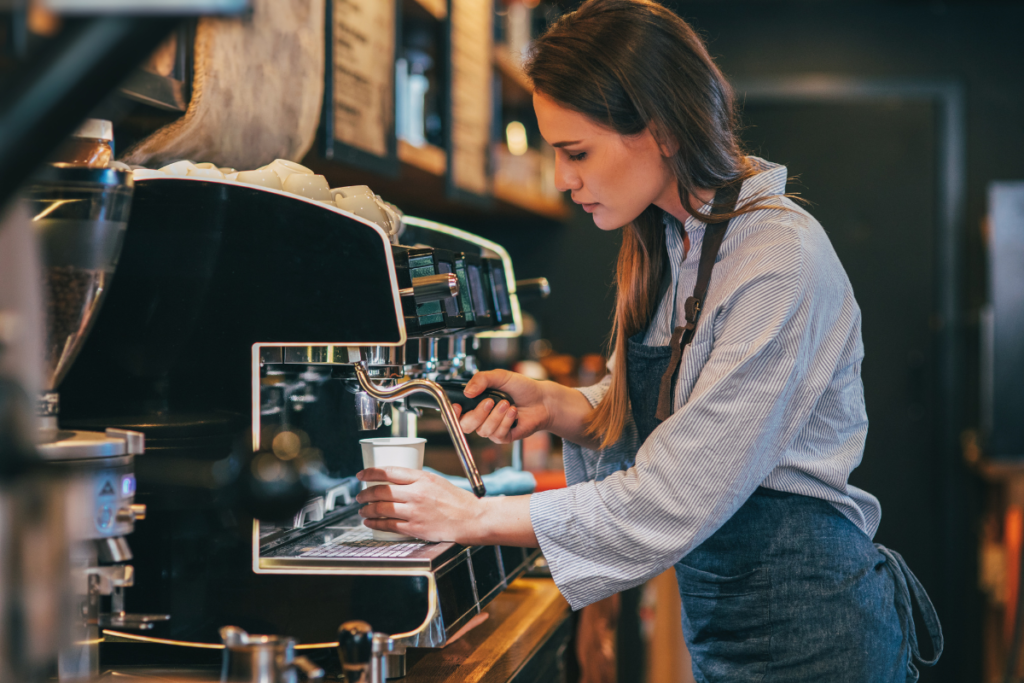
Brewing the perfect cup of coffee is an art that involves understanding various brewing methods, the importance of grind size and consistency, and the role of brewing time in flavor extraction.
Here, we delve into advanced tips and tricks that can help you refine your coffee brewing skills and explore the nuances of different brewing techniques.
Discussing Different Brewing Methods
Each brewing method has unique characteristics and can significantly affect the flavor of the coffee:
- French Press: Known for producing a rich and full-bodied cup of coffee, the French press allows for complete immersion of the coffee grounds in water. The key is to use a coarse grind and to steep the coffee for about four minutes before plunging.
- Drip Coffee Maker: Popular for its convenience, the drip method involves water dripping through coffee grounds held in a filter. A medium grind works best here, with brewing times varying based on the machine. Drip coffee is typically clean and clear with a more delicate flavor profile.
- Espresso: Espresso is a highly concentrated form of brewed coffee, made by pushing a small volume of nearly boiling water through finely-ground coffee beans. The grind should be very fine, and the brewing time is short, usually 20-30 seconds, resulting in a rich, bold shot of coffee.
- Pour-Over: This brew method involves pouring hot water over coffee grounds in a filter. The water then drains through the coffee and filter into a carafe or mug. A medium-fine grind is ideal, and pouring technique and timing are crucial for a balanced extraction.
- Aeropress: A versatile and portable method, the Aeropress can make a variety of coffee strengths, from espresso-like concentrate to regular strength coffee. It requires a fine to medium grind, with brewing time around 1 to 2 minutes.
The Importance of Grind Size and Consistency

Grind size is crucial in coffee brewing. Coffee that is ground too fine can cause over-extraction, making the coffee bitter, while a too-coarse grind can cause under-extraction, leading to a weak, sour cup.
Consistency in grind size is just as important, ensuring even extraction and a balanced flavor. Invest in a high-quality burr grinder, which provides more consistent grinds than blade grinders.
The Role of Brewing Time in Flavor Extraction
Brewing time is a critical factor in the extraction process:
- Short Brewing Time: Ideal for methods like espresso, where a short extraction time under high pressure creates a concentrated and flavorful shot.
- Longer Brewing Time: Methods like the French press or cold brew require longer brewing times, allowing for a fuller extraction of flavors, especially the deeper, more complex notes.
- Experiment and Adjust: Depending on your brewing method, you may need to experiment with brew times to find your desired strength and flavor profile.
Understanding these advanced aspects of coffee brewing can greatly enhance your coffee-making skills.
Experiment with different brewing methods, pay attention to grind size and consistency, and fine-tune the brewing time to suit your taste. This exploration not only improves the quality of your coffee but also makes the brewing process a more enjoyable and rewarding experience.
Maintaining Your Coffee Equipment
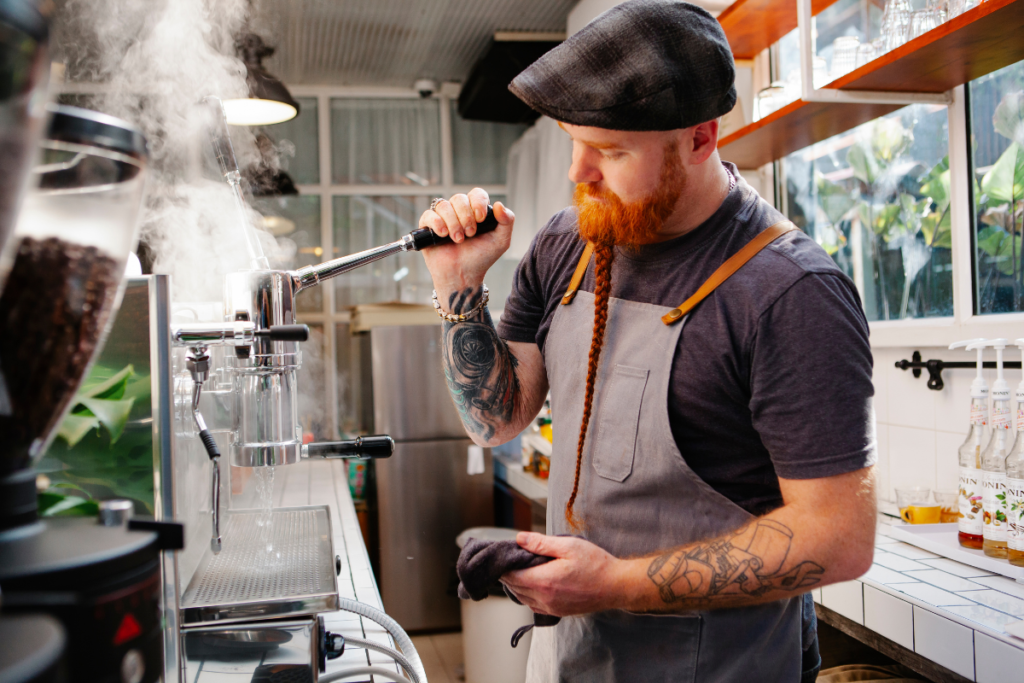
Proper maintenance and regular cleaning of your coffee equipment are essential for ensuring the best possible taste of your coffee.
Residual oils and coffee grounds can build up over time, affecting both the flavor of your coffee and the performance of your equipment. By taking care of your coffee brewing tools, you can ensure that each cup of coffee you make is as fresh and flavorful as possible.
Importance of Regular Cleaning and Maintenance
Regular cleaning prevents build-up of coffee oils, grounds, and other residues that can lead to off-flavors in your coffee. It also helps to maintain the efficiency and longevity of your brewing equipment.
Whether it’s a simple French press or a high-end espresso machine, keeping your equipment clean is crucial for consistently good coffee.
Tips for Cleaning Coffee Makers and Grinders
Coffee Makers:
- Daily Cleaning: After each use, discard the grounds and rinse the brew basket, carafe, and any other removable parts with warm, soapy water.
- Deep Cleaning: Once a month, decalcify your machine to remove mineral deposits. Run a brewing cycle with a mixture of water and white vinegar in equal ratios, followed by a few cycles with plain water to rinse.
Grinders:
- Blade Grinders: Unplug the grinder, remove any coffee particles using a brush or a dry cloth. For a deeper clean, grind a small amount of rice which can help absorb oils and residue.
- Burr Grinders: Disassemble the burrs according to the manufacturer’s instructions. Clean them using a specialized grinder brush or a soft cloth. Avoid saturating the burs in water, as it can cause rust.
Espresso Machines:
- Clean the portafilter and basket after every use.
- Backflush the machine with clean water daily if it has a three-way valve.
- Use a coffee machine cleaner for backflushing as recommended by the manufacturer.
French Press, Pour-Over Cones, and Aeropress:
- Disassemble and wash all parts of the brewer with warm, soapy water.
- For stubborn residue, use baking soda or a coffee-specific cleaning product.
How Equipment Care Affects Coffee Taste
The cleanliness of your equipment directly impacts the taste of your coffee. Residues and oils from previous brews can impart bitter and rancid flavors to your coffee. Regular maintenance also ensures that your equipment operates at its best.
For example, a clean and well-maintained grinder will grind more consistently, leading to better extraction and a more balanced cup.
In summary, taking good care of your coffee equipment is as important as selecting quality beans and using the right brewing techniques. Regular cleaning not only maintains the quality and flavor of your coffee but also extends the life of your equipment, making it a worthwhile investment in your coffee journey.
Conclusion
Brewing great coffee is a delightful blend of art and science, involving careful selection of beans, precise water-to-coffee ratios, and meticulous brewing techniques. Each element we’ve discussed plays a significant role in creating that perfect cup of coffee.
As you continue on your coffee journey, remember that experimentation is the heart of mastering coffee brewing. Don’t hesitate to try different beans, adjust your ratios, and explore various brewing methods. Each adjustment you make can lead to new discoveries and a deeper appreciation for the subtleties of coffee.
Coffee making is not just about the end product; it’s about the experience. From the aroma of freshly ground beans to the warmth of a freshly brewed cup, coffee brewing is a ritual that engages the senses. It’s a moment to pause, reflect, and indulge in the simple pleasure of crafting something truly yours.
-
Espresso Express eBook
R180,00 -
From Bean To Brew eBook
R450,00 -
Great Coffee, Made Simple
R0,00



